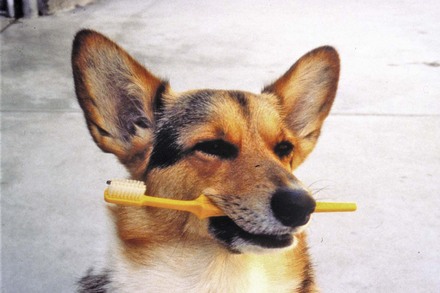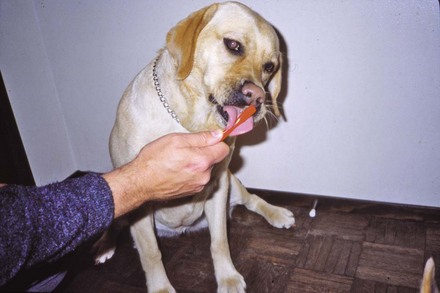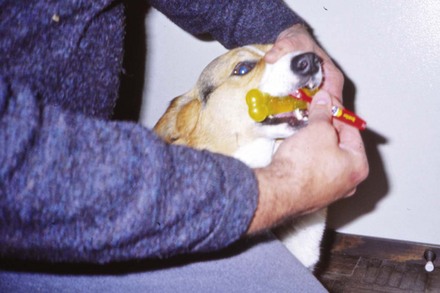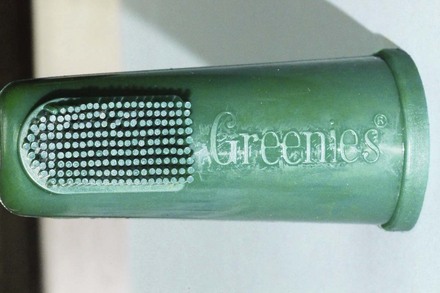8 Home-Care Instruction and Products
When you have completed this chapter, you will be able to:
• Discuss issues related to client education for dental care of their pets.
• Discuss methods used to acclimate patients to tooth brushing.
• Describe advantages and disadvantages of the various brushing devices available for use with dogs and cats.
• List and describe home-care products used for promoting oral health in dogs and cats.
• Explain the general rules for choosing toys and chews for dogs and cats.
• Describe the action of chlorhexidine and list products that contain chlorhexidine.
• Describe the use of fluoride-containing products in dental care of dogs and cats.
Client Education
All members of the veterinary office staff play important roles in the promotion of pet oral health by home-care instruction. These efforts help bond the client to the practice. Staff members should review brushing and home-care techniques with clients. If possible, a “demonstrator” dog (or cat) should be used (Figure 8-1). Otherwise, plastic or plaster dental models can be used to show brushing techniques. These models show pathologic as well as healthy conditions. However, skulls should not be used for demonstration because some clients respond negatively to them.
Demonstration
Tips for difficult cases
For patients that resist attempts to brush, flavored material or toothpaste can be placed on the toothbrush. The patient is allowed to lick the brush, with no effort made to brush the teeth or restrain the patient in any way (Figure 8-2). Once the patient begins to become comfortable with the process, the client can begin to swipe at the teeth. Eventually, full brushing can take place. Cats may respond positively to liquid drained out of water-packed tuna.
Visual Aids
With the advent of computers, handouts can be customized to reflect each patient’s specific condition. For example, a client whose pet has stage 1 periodontal disease (PD 1) requires different educational materials than a client whose pet has stage 4 (PD 4). These handouts can be linked to either diagnostic codes or service codes so that when a particular procedure is performed, the handout is generated automatically. Preprinted or computer-generated handouts provide information about periodontics, endodontics, orthodontics, and other dental diseases and treatments. Several companies make flip charts or wall charts that demonstrate various aspects of veterinary dentistry. Polaroid or digital photographs can be used to demonstrate each patient’s pathologic condition and often are a key to client communication. Videotapes showing dental procedures are also available. Box 8-1 lists a few online videos that may be helpful.
Plaque Control and Home Care
Toothbrushing
Brushing devices
The most important strategy in the prevention of periodontal disease is plaque control. There are two major methods of plaque control: mechanical and chemical. The mechanical removal of plaque is particularly important in the control of periodontal disease. Many types of devices can be used. The use of a soft, child-size or preschool toothbrush is the most effective method. Rubber fingerbrushes are available and are easier for the client to adapt to their pet’s teeth (Figure 8-4). However, they may not be as effective as other toothbrushes and canine and feline toothbrushes (Figures 8-5 and 8-6). A cotton-tipped applicator may be effective for some patients. Smaller brushes useful for brushing the interproximal and furcation areas are available at human pharmacies (Figures 8-7 through 8-9).
Stay updated, free articles. Join our Telegram channel

Full access? Get Clinical Tree






